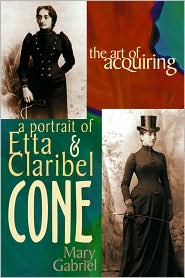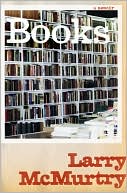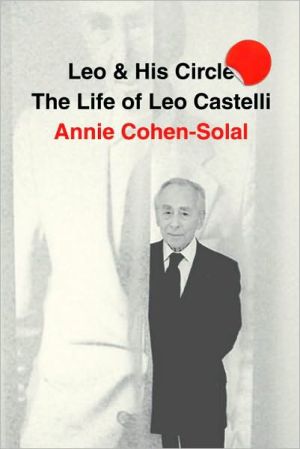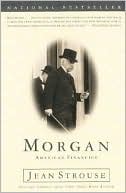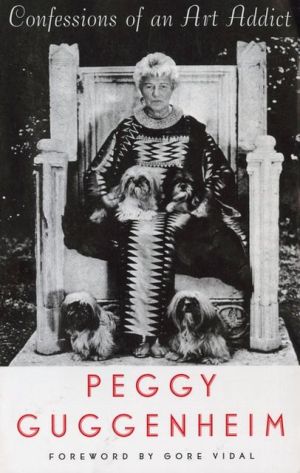The Art of Acquiring: A Portrait of the Cone Sisters, Matisse's True Discoverers
For four and a half decades, Etta and Claribel Cone roamed artists' studios and art galleries in Europe, building one of the largest, most important art collections in the world. At one time, these two independently wealthy Jewish women from Baltimore received offers from virtually every prominent art museum in the world, all anxious to house their hitherto private assemblage of modern art. In 1949, they awarded all their holdings to the Baltimore Museum of Art. In 2002, that collection was...
Search in google:
Etta and Claribel Cone had an eye for art that was unparalleled at their time, and they left Baltimore what is perhaps the best gift the city (or the world) has ever received: their collection, valued at $1 billion in 2002. Gabriel tells the story of how these two upright sisters, who never abandoned Victorian dress nor engaged in romantic relationships with men, collected with daring and passion, bringing modern artists such as Matisse and Picasso to this country long before the painters were publicly recognized or respected, much less collected.Publishers WeeklyArt history traditionally concerns itself with the lives and creative processes of artists. But here Gabriel (Notorious Victoria: The Rise and Fall of Victoria Woodhull) focuses on "the barely recognized link" between modernist masters such as C zanne, Degas, Picasso and Matisse, and the largely forgotten art collectors Etta and Claribel Cone, wealthy--and stolidly Victorian--Baltimore sisters who, starting around the turn of the century, devoted their lives to amassing one of the largest and most remarkable collections of modern art in the world. Although neither Claribel, a sternly imposing physician, nor her retiring and unassuming sibling, seemed likely patrons of modernism, Etta secured the lifelong friendship of Matisse and Picasso while they still languished in poverty and obscurity. Frequently among the first to "discover" the artists who made history, the Cones are nevertheless usually portrayed as provincial spinsters who relied on family friends Gertrude and Leo Stein for guidance. Gabriel ably demonstrates that conventional wisdom has robbed the Cone sisters of credit for their own lively and often iconoclastic aesthetic sensibilities. By inviting us to view early 20th-century painting through the Cones' eyes and by adeptly weaving the threads of their life stories into the larger fabric of the social and artistic history of their time, Gabriel complicates our understanding of the inner lives of these outwardly conventional women and of the relationship between art and its audience. Photos not seen by PW. (June) Copyright 1999 Cahners Business Information.
\ Publishers Weekly - Publisher's Weekly\ Art history traditionally concerns itself with the lives and creative processes of artists. But here Gabriel (Notorious Victoria: The Rise and Fall of Victoria Woodhull) focuses on "the barely recognized link" between modernist masters such as C zanne, Degas, Picasso and Matisse, and the largely forgotten art collectors Etta and Claribel Cone, wealthy--and stolidly Victorian--Baltimore sisters who, starting around the turn of the century, devoted their lives to amassing one of the largest and most remarkable collections of modern art in the world. Although neither Claribel, a sternly imposing physician, nor her retiring and unassuming sibling, seemed likely patrons of modernism, Etta secured the lifelong friendship of Matisse and Picasso while they still languished in poverty and obscurity. Frequently among the first to "discover" the artists who made history, the Cones are nevertheless usually portrayed as provincial spinsters who relied on family friends Gertrude and Leo Stein for guidance. Gabriel ably demonstrates that conventional wisdom has robbed the Cone sisters of credit for their own lively and often iconoclastic aesthetic sensibilities. By inviting us to view early 20th-century painting through the Cones' eyes and by adeptly weaving the threads of their life stories into the larger fabric of the social and artistic history of their time, Gabriel complicates our understanding of the inner lives of these outwardly conventional women and of the relationship between art and its audience. Photos not seen by PW. (June) Copyright 1999 Cahners Business Information.\ \ \ \ \ Library JournalHeiresses to a family fortune, Etta and Claribel Cone, Jewish sisters from Baltimore, amassed a major collection of modern French artworks. Their Victorian demeanor and dress belied two free-spirited eccentrics whose bold purchases of avant-garde, sometimes erotic art shocked early 20th-century society. They bought what pleased them, jamming their Baltimore apartments with paintings by Matisse, Picasso, C zanne, D gas, Van Gogh, Manet, Redon, Pissarro, and others. Reuters reporter Gabriel (Notorious Victoria, LJ 11/15/97) has given life to these obscure sisters in a captivating biography that covers Gertrude Stein's influence, tireless European travels to artists' studios and galleries, and, most notably, the interdependence of collectors and artists. Sought after by leading museum directors, their collection, described in Brenda Richardson's Dr. Claribel and Miss Etta (1985), was bequeathed to the Baltimore Museum of Art. Highly recommended.--Joan Levin, MLS, Chicago Copyright 1999 Cahners Business Information.\ \ \ Kirkus ReviewsThe story of how two spinster sisters from Baltimore acquired a remarkable collection of the sensual, avant-garde paintings of early 20th-century artists: Matisse, Picasso, Gauguin, and others. Their biographer, a former Reuters reporter and editor, is also the author of a life of Victoria Woodhull (1998). The Baltimore Museum of Art's Cone collection and the wing that houses it is the legacy of Dr. Claribel and Etta Cone, among the heirs to a family fortune based in part on textile manufacture. Etta was dedicated to caring for her extended family; Claribel was the more adventurous, graduating first in her class from medical school in 1890. The sisters came to know Leo and Gertrude Stein during the Steins' early sojourn in Baltimore; intrigued by the Steins' reports of their hedonistic summers in Europe, Etta set sail for Italy in the spring of 1901 and alternated between Baltimore and Europe for the rest of her life; her friendships with and support of artists, particularly Matisse, were to continue as long. Claribel too turned from science to art, after sticking it out as a medical researcher in Germany through the beginning of Hitler's rise. The sisters' separate apartments in Baltimore were filled not only with paintings, prints, drawings, and sculptures but also with fabrics, jewels, and artifacts collected from around the world. After Claribel's death in 1929, Etta set out to fill the gaps in the collection and published an illustrated book of works that she owned, by then including Cézanne, Renoir, and Degas, among many others. Etta died in 1949, following the purchase of yet another Picasso. A pleasant addition to the Baltimore Museum's gift-shop offerings,perhaps, but this slight romance of two sisters in Paris when artistic ferment was at its height offers little real insight into collecting or the collectors. (16 pages b&w, 16 pages color photos, not seen)\ \
